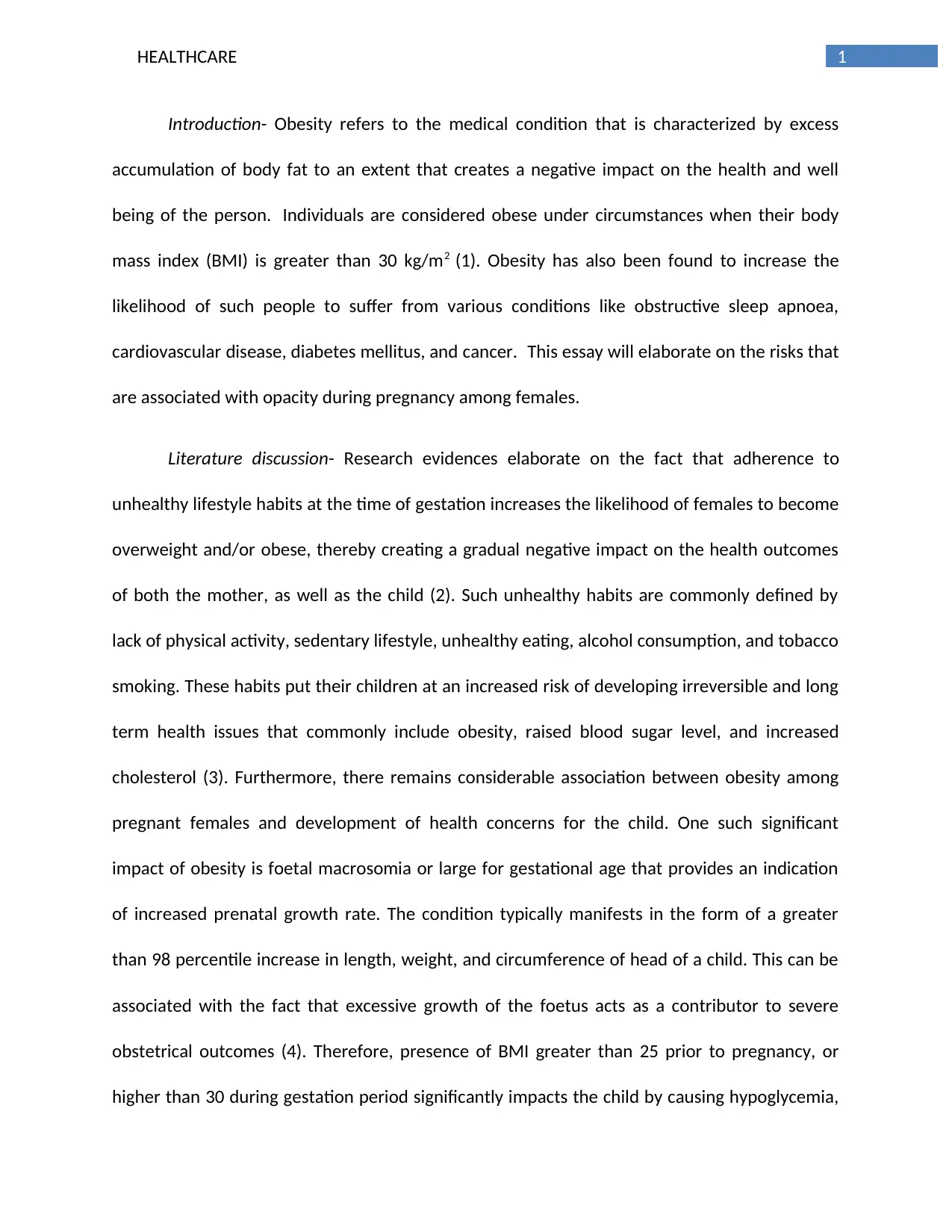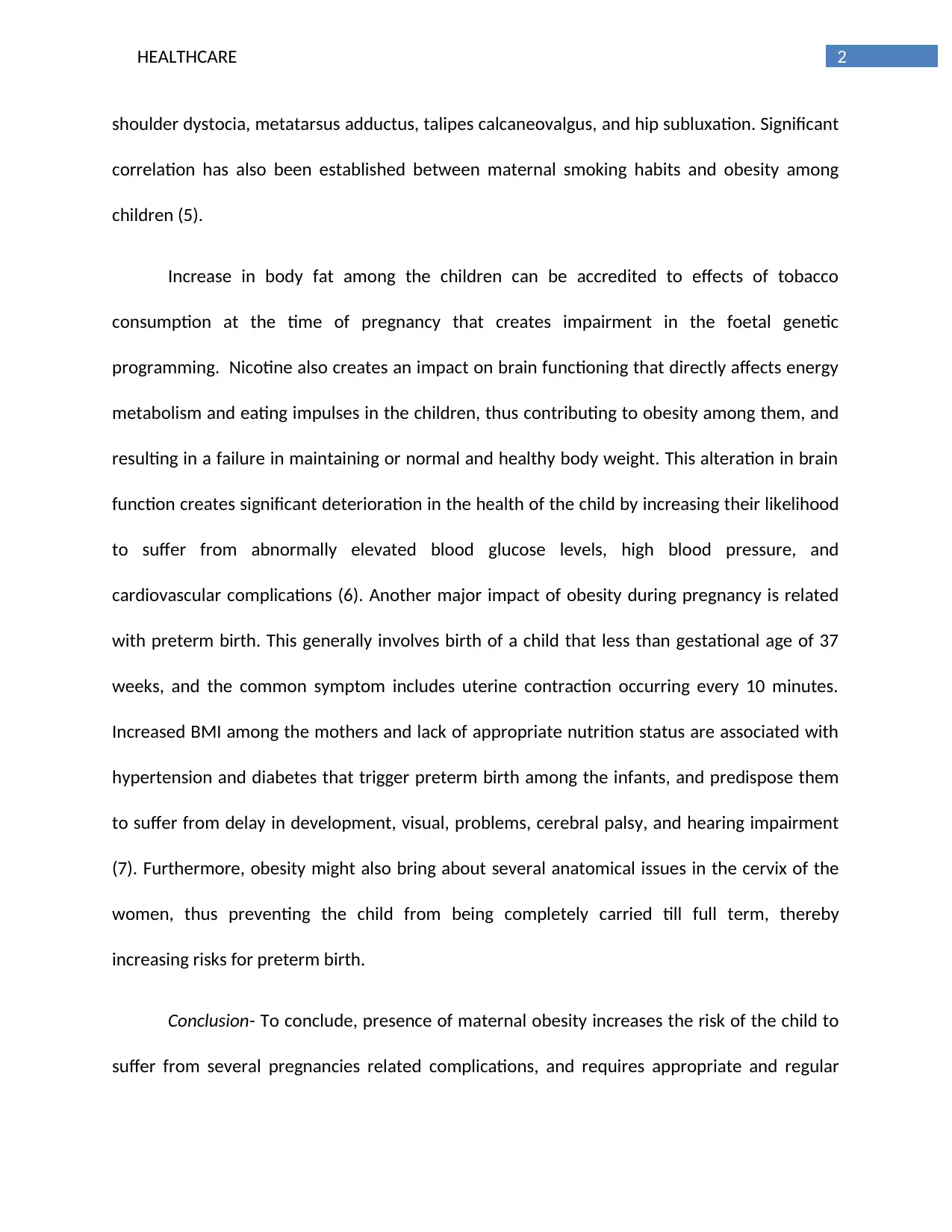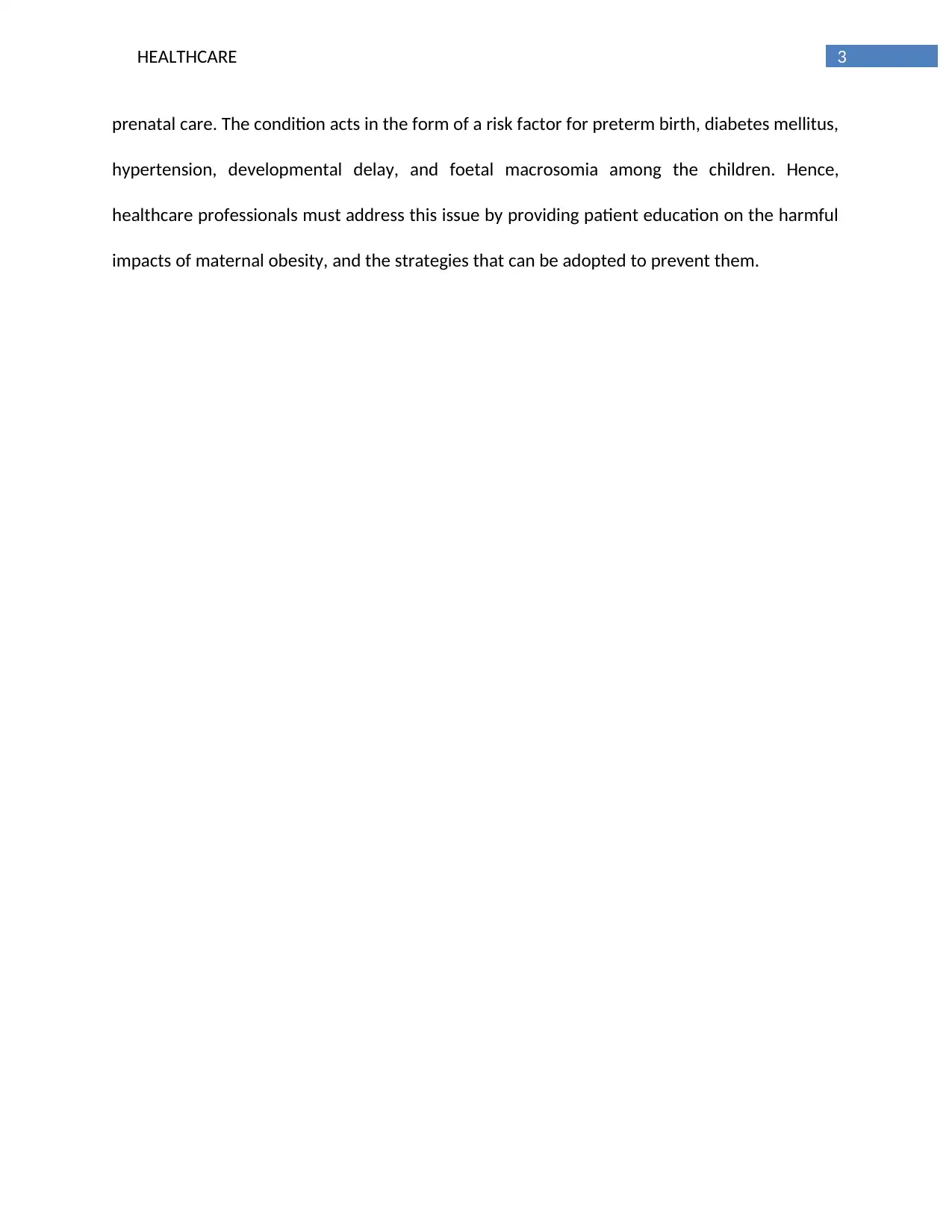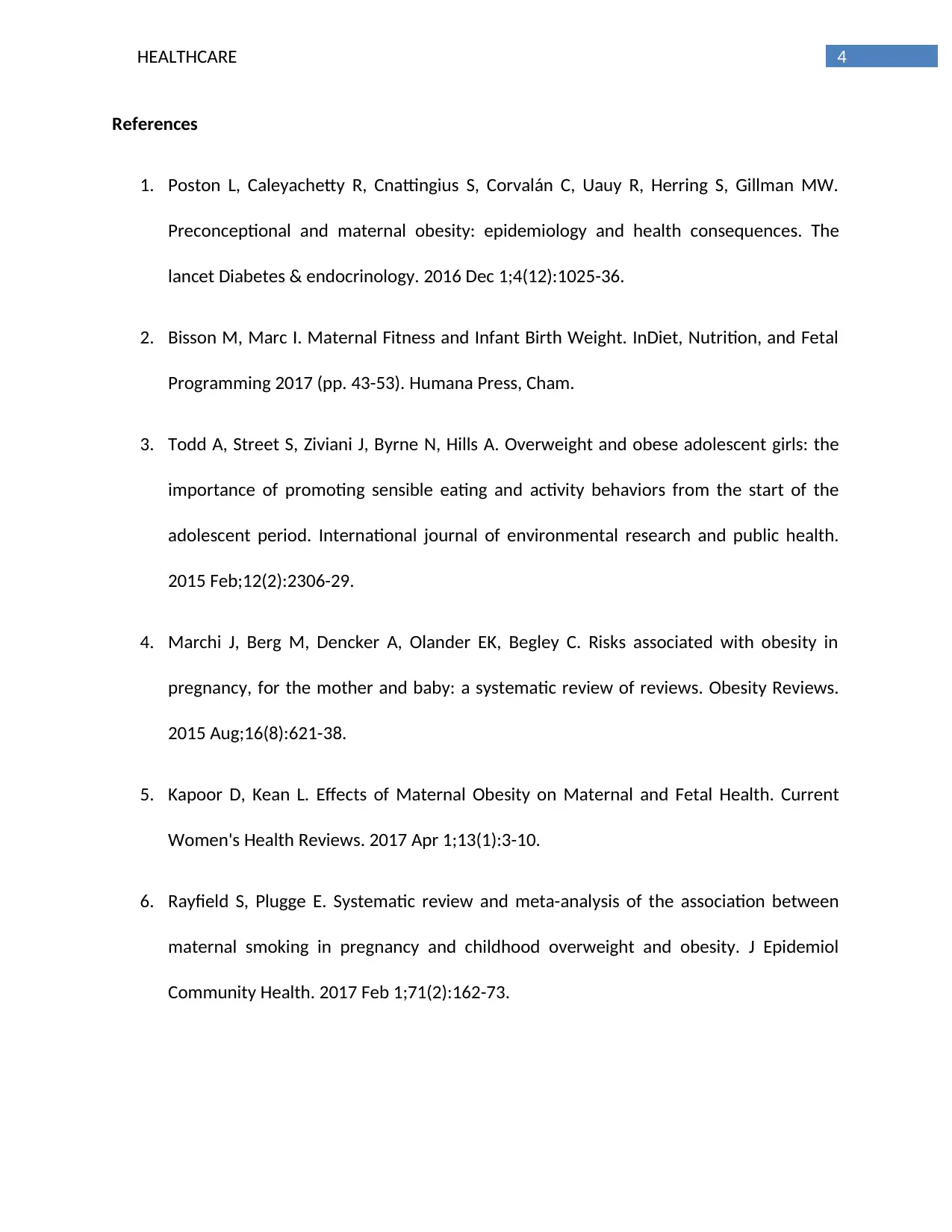Healthcare Literature Review: Obesity Risks During Pregnancy Outcomes
VerifiedAdded on 2023/03/23
|6
|1034
|88
Literature Review
AI Summary
This literature review examines the risks associated with maternal obesity during pregnancy, highlighting its negative impacts on both the mother and child. It discusses how unhealthy lifestyle habits during gestation can lead to obesity, increasing the likelihood of complications such as fetal macrosomia, preterm birth, and developmental delays in children. The review also explores the correlation between maternal smoking habits and childhood obesity, attributing it to impaired fetal genetic programming and altered brain function affecting energy metabolism and eating impulses. Furthermore, the review emphasizes the importance of prenatal care and patient education to address maternal obesity and mitigate its harmful effects, advocating for strategies to prevent pregnancy-related complications such as diabetes mellitus and hypertension. The review concludes that healthcare professionals should prioritize educating patients about the dangers of maternal obesity and the preventive measures that can be adopted to ensure healthier outcomes for both mother and child.
1 out of 6












![[object Object]](/_next/static/media/star-bottom.7253800d.svg)